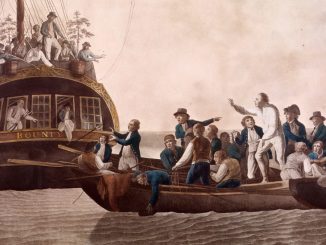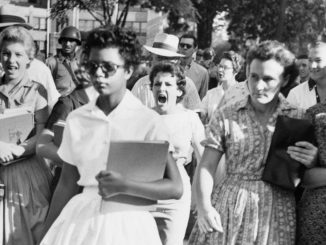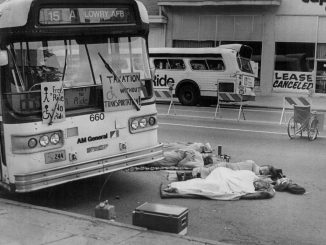Violence mounted in the 1980s, with Palestinians clashing with Jewish settlers in the occupied territories. In 1982, Israel invaded Lebanon to dislodge the PLO. In 1987, Palestinian residents of Gaza and the West Bank launched a series of violent demonstrations against Israeli authorities known as the intifada, or the “shaking off.” Shortly after, Jordan’s King Hussein renounced all administrative responsibility for the West Bank, thereby strengthening the PLO’s influence there. As the intifada raged on, Yasser Arafat proclaimed an independent Palestinian state in the West Bank and Gaza Strip on November 15, 1988. One month later, he denounced terrorism, recognized the State of Israel’s right to exist, and authorized the beginning of “land-for-peace” negotiations with Israel.
Israel refused to open direct talks with the PLO, but in 1991 Israeli diplomats met with a joint Jordanian-Palestinian delegation at the Madrid peace conference. In 1992, Labor Party leader Yitzhak Rabin became Israeli prime minister, and he vowed to move quickly on the peace process. He froze new Israeli settlements in the occupied territory and authorized secret negotiations between Israel and the PLO that began in January 1993 in Oslo, Norway. These talks resulted in several key agreements and led to the historic peace accord of September 13, 1993.
On the South Lawn of the White House that day, Israeli Foreign Minister Shimon Peres and PLO foreign policy official Mahmoud Abbas signed the Declaration of Principles on Interim Self-Government Arrangements. The accord called for the withdrawal of Israeli troops from the Gaza Strip and the West Bank town of Jericho and the establishment of a Palestinian government that would eventually be granted authority over much of the West Bank. President Bill Clinton presided over the ceremony, and more than 3,000 onlookers, including former presidents George Bush and Jimmy Carter , watched in amazement as Arafat and Rabin sealed the agreement with a handshake. The old bitter enemies had met for the first time at a White House reception that morning.
In his remarks, Rabin, a former top-ranking Israeli army general, told the crowd: “We the soldiers who have returned from the battle stained with blood; we who have seen our relatives and friends killed before our eyes; we who have fought against you, the Palestinians; we say to you today in a loud and clear voice: Enough of blood and tears. Enough!” And Arafat, the guerrilla leader who for decades was targeted for assassination by Israeli agents, declared that “The battle for peace is the most difficult battle of our lives. It deserves our utmost efforts because the land of peace yearns for a just and comprehensive peace.”
Despite attempts by extremists on both sides to sabotage the peace process with violence, the Israelis completed their withdrawal from the Gaza Strip and Jericho in May 1994. In July, Arafat entered Jericho amid much Palestinian jubilation and set up his government–the Palestinian Authority. In October 1994, Arafat, Yitzhak Rabin, and Shimon Peres were jointly awarded the Nobel Peace Prize for their efforts at reconciliation.
In September 1995, Rabin, Arafat, and Peres signed a peace agreement providing for the expansion of Palestinian self-rule in the West Bank and for democratic elections to determine the leadership of the Palestinian Authority. Just over a month later, on November 4, 1995, Rabin was assassinated by a Jewish extremist at a peace rally in Tel Aviv. Peres became prime minister and pledged to continue the peace process. However, terrorist attacks by Palestinian extremists in early 1996 swayed Israeli public opinion, and in May Benjamin Netanyahu of the right-wing Likud Party was elected prime minister. Netanyahu insisted that Palestinian Authority Chairman Arafat meet his obligation to end terrorism by Palestinian extremists, but sporadic attacks continued and the peace process stalled.
In May 1999, Ehud Barak of the Labor Party defeated Netanyahu in national elections and pledged to take “bold steps” to forge a comprehensive peace in the Middle East. However, extended negotiations with the PLO ended in failure in July 2000, when Barak and Arafat failed to reach an agreement at a summit at Camp David, Maryland . In September 2000, the worst violence since the intifada broke out between Israelis and Palestinians after Likud leader Ariel Sharon visited the Temple Mount, the holiest Islamic site in Jerusalem. Seeking a strong leader to suppress the bloodshed, Israelis elected Sharon prime minister in February 2001. Though Arafat pledged to join in America’s “war on terror” after the attacks of September 11, 2001, he was not able to garner favor with U.S. President George W. Bush , who was strongly pro-Israel. In December 2001, after a series of Palestinian suicide attacks on Israel, Bush did nothing to stop Israel as it re-conquered areas of the West Bank and occupied parts of Ramallah, effectively imprisoning Arafat in the Palestinian Authority’s headquarters..
After Israel dismissed an alternative peace plan put forth by the Arab League in March 2002, Palestinian attacks increased, causing Israel to again turn to military intervention in the West Bank. A cycle of terrorist attacks, IDF reprisals, and failed diplomacy continued for the next two years.
In late October of 2004, reports surfaced that Arafat was seriously ill. He was flown to Paris for treatment, and in early November fell into a coma. He was pronounced dead on November 11.
Mahmoud Abbas became the new chairman of the PLO and was elected president of the Palestinian Authority in January 2005. The next year, Hamas, seen by many observors as a terrorist organization, won control of the Palestinian legislative body, complicating any potential negotiations. Despite an Israeli withdrawal from the disputed Gaza territory, and the fact that both sides ostensibly are committed to a two-state solution, peace in the region remains elusive.













Be the first to comment